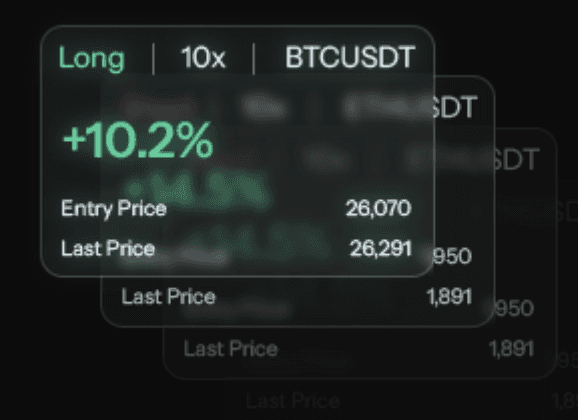Bullish and Bearish Order Blocks: Add This to Your Trading Strategy for Safer Trades
Jul 28, 2023
Introduction:
As individual traders, we all strive to improve our trading strategies and maximize profits in the dynamic world of financial markets. Understanding key concepts such as bullish and bearish order blocks can be instrumental in achieving trading success. In this blog post, we will explore what bullish and bearish order blocks are, how they can enhance your trading approach, and the steps to incorporate them into your strategy.
Bullish and Bearish Order Blocks:
Order blocks are significant price levels on a chart where a cluster of buy or sell orders have accumulated. They often act as areas of strong support and resistance, exerting a considerable influence on price movements. Among these, two primary types stand out: bullish order blocks and bearish order blocks.
1. Bullish Order Blocks:
Bullish order blocks are price levels where a significant accumulation of buy orders has taken place, leading to a strong demand for the asset. These blocks are typically formed after a sharp upward price movement, signaling that buyers are actively entering the market and supporting the upward trend. When price revisits these bullish order blocks, they can act as robust support levels, potentially initiating new bullish moves.
2. Bearish Order Blocks:
On the other hand, bearish order blocks are areas where a substantial concentration of sell orders exists. They usually form after a pronounced downward price movement, indicating intense selling pressure. When price returns to these bearish order blocks, they can serve as formidable resistance levels, potentially triggering further bearish movements.
Incorporating Bullish and Bearish Order Blocks into Your Trading Strategy:
Now that we understand the significance of order blocks let's see how you can integrate them into your trading strategy to enhance your decision-making process.
1. Identifying Order Blocks:
To identify order blocks, rely on historical price data and chart analysis. Look for clusters of price bars where the market stalled or reversed. These zones often coincide with support and resistance levels. There are some technical indicators available to help you identify these blocks more quickly, but it’s recommended you research their accuracy thoroughly before making any decisions.
2. Plotting Support and Resistance:
Mark the identified bullish and bearish order blocks as significant support and resistance levels on your charts. Use horizontal lines or other drawing tools to highlight these zones for easy reference.
3. Confirming with Indicators:
To increase the reliability of order blocks, consider using technical indicators such as the Moving Average, RSI, or MACD. Confirming order blocks with indicator signals can provide added confidence in your trading decisions.
4. Patience and Precision:
Be patient and wait for price action to interact with these order blocks. Observe how the market reacts when it reaches these levels. Look for bullish or bearish price patterns and candlestick formations that support your analysis.
5. Risk Management:
Implement strict risk management practices to protect your capital. Set stop-loss levels just below support or above resistance when trading around order blocks, ensuring you limit potential losses.
Conclusion:
Bullish and bearish order blocks are powerful tools in the hands of individual traders seeking to improve their trading strategies and boost profits. By identifying and incorporating these significant support and resistance levels into your analysis, you can make more informed trading decisions and seize opportunities with greater confidence.
Remember, successful trading requires a blend of technical analysis, risk management, and a disciplined approach. Continuously practice and refine your skills, and over time, you'll be better equipped to navigate the markets and capitalize on the potential offered by bullish and bearish order blocks.
Happy & Safe Trading!

Bullish and Bearish Order Blocks: Add This to Your Trading Strategy for Safer Trades
Jul 28, 2023
Introduction:
As individual traders, we all strive to improve our trading strategies and maximize profits in the dynamic world of financial markets. Understanding key concepts such as bullish and bearish order blocks can be instrumental in achieving trading success. In this blog post, we will explore what bullish and bearish order blocks are, how they can enhance your trading approach, and the steps to incorporate them into your strategy.
Bullish and Bearish Order Blocks:
Order blocks are significant price levels on a chart where a cluster of buy or sell orders have accumulated. They often act as areas of strong support and resistance, exerting a considerable influence on price movements. Among these, two primary types stand out: bullish order blocks and bearish order blocks.
1. Bullish Order Blocks:
Bullish order blocks are price levels where a significant accumulation of buy orders has taken place, leading to a strong demand for the asset. These blocks are typically formed after a sharp upward price movement, signaling that buyers are actively entering the market and supporting the upward trend. When price revisits these bullish order blocks, they can act as robust support levels, potentially initiating new bullish moves.
2. Bearish Order Blocks:
On the other hand, bearish order blocks are areas where a substantial concentration of sell orders exists. They usually form after a pronounced downward price movement, indicating intense selling pressure. When price returns to these bearish order blocks, they can serve as formidable resistance levels, potentially triggering further bearish movements.
Incorporating Bullish and Bearish Order Blocks into Your Trading Strategy:
Now that we understand the significance of order blocks let's see how you can integrate them into your trading strategy to enhance your decision-making process.
1. Identifying Order Blocks:
To identify order blocks, rely on historical price data and chart analysis. Look for clusters of price bars where the market stalled or reversed. These zones often coincide with support and resistance levels. There are some technical indicators available to help you identify these blocks more quickly, but it’s recommended you research their accuracy thoroughly before making any decisions.
2. Plotting Support and Resistance:
Mark the identified bullish and bearish order blocks as significant support and resistance levels on your charts. Use horizontal lines or other drawing tools to highlight these zones for easy reference.
3. Confirming with Indicators:
To increase the reliability of order blocks, consider using technical indicators such as the Moving Average, RSI, or MACD. Confirming order blocks with indicator signals can provide added confidence in your trading decisions.
4. Patience and Precision:
Be patient and wait for price action to interact with these order blocks. Observe how the market reacts when it reaches these levels. Look for bullish or bearish price patterns and candlestick formations that support your analysis.
5. Risk Management:
Implement strict risk management practices to protect your capital. Set stop-loss levels just below support or above resistance when trading around order blocks, ensuring you limit potential losses.
Conclusion:
Bullish and bearish order blocks are powerful tools in the hands of individual traders seeking to improve their trading strategies and boost profits. By identifying and incorporating these significant support and resistance levels into your analysis, you can make more informed trading decisions and seize opportunities with greater confidence.
Remember, successful trading requires a blend of technical analysis, risk management, and a disciplined approach. Continuously practice and refine your skills, and over time, you'll be better equipped to navigate the markets and capitalize on the potential offered by bullish and bearish order blocks.
Happy & Safe Trading!

Bullish and Bearish Order Blocks: Add This to Your Trading Strategy for Safer Trades
Jul 28, 2023
Introduction:
As individual traders, we all strive to improve our trading strategies and maximize profits in the dynamic world of financial markets. Understanding key concepts such as bullish and bearish order blocks can be instrumental in achieving trading success. In this blog post, we will explore what bullish and bearish order blocks are, how they can enhance your trading approach, and the steps to incorporate them into your strategy.
Bullish and Bearish Order Blocks:
Order blocks are significant price levels on a chart where a cluster of buy or sell orders have accumulated. They often act as areas of strong support and resistance, exerting a considerable influence on price movements. Among these, two primary types stand out: bullish order blocks and bearish order blocks.
1. Bullish Order Blocks:
Bullish order blocks are price levels where a significant accumulation of buy orders has taken place, leading to a strong demand for the asset. These blocks are typically formed after a sharp upward price movement, signaling that buyers are actively entering the market and supporting the upward trend. When price revisits these bullish order blocks, they can act as robust support levels, potentially initiating new bullish moves.
2. Bearish Order Blocks:
On the other hand, bearish order blocks are areas where a substantial concentration of sell orders exists. They usually form after a pronounced downward price movement, indicating intense selling pressure. When price returns to these bearish order blocks, they can serve as formidable resistance levels, potentially triggering further bearish movements.
Incorporating Bullish and Bearish Order Blocks into Your Trading Strategy:
Now that we understand the significance of order blocks let's see how you can integrate them into your trading strategy to enhance your decision-making process.
1. Identifying Order Blocks:
To identify order blocks, rely on historical price data and chart analysis. Look for clusters of price bars where the market stalled or reversed. These zones often coincide with support and resistance levels. There are some technical indicators available to help you identify these blocks more quickly, but it’s recommended you research their accuracy thoroughly before making any decisions.
2. Plotting Support and Resistance:
Mark the identified bullish and bearish order blocks as significant support and resistance levels on your charts. Use horizontal lines or other drawing tools to highlight these zones for easy reference.
3. Confirming with Indicators:
To increase the reliability of order blocks, consider using technical indicators such as the Moving Average, RSI, or MACD. Confirming order blocks with indicator signals can provide added confidence in your trading decisions.
4. Patience and Precision:
Be patient and wait for price action to interact with these order blocks. Observe how the market reacts when it reaches these levels. Look for bullish or bearish price patterns and candlestick formations that support your analysis.
5. Risk Management:
Implement strict risk management practices to protect your capital. Set stop-loss levels just below support or above resistance when trading around order blocks, ensuring you limit potential losses.
Conclusion:
Bullish and bearish order blocks are powerful tools in the hands of individual traders seeking to improve their trading strategies and boost profits. By identifying and incorporating these significant support and resistance levels into your analysis, you can make more informed trading decisions and seize opportunities with greater confidence.
Remember, successful trading requires a blend of technical analysis, risk management, and a disciplined approach. Continuously practice and refine your skills, and over time, you'll be better equipped to navigate the markets and capitalize on the potential offered by bullish and bearish order blocks.
Happy & Safe Trading!

Supercharge your trading game with Market Mapper today!




